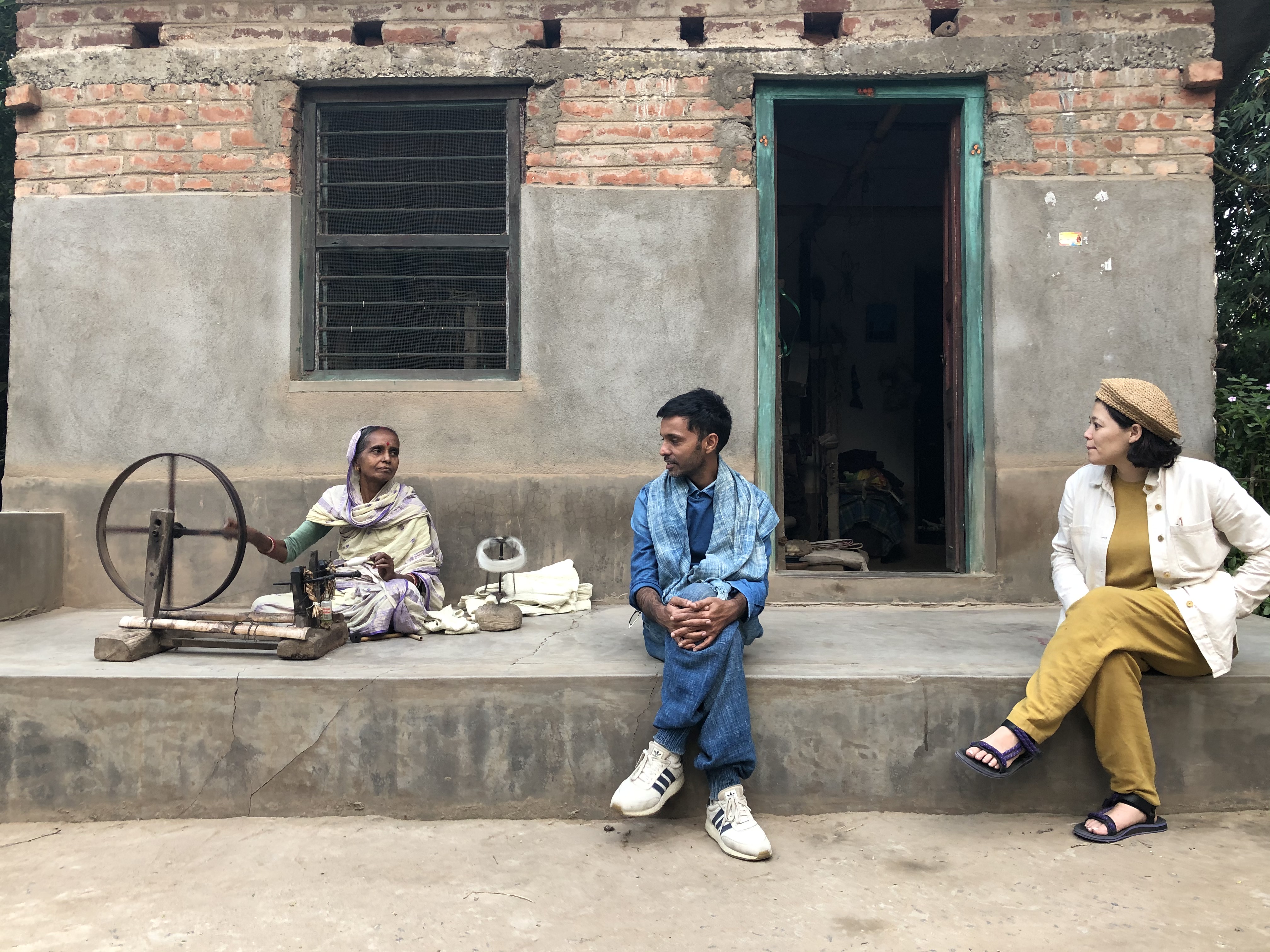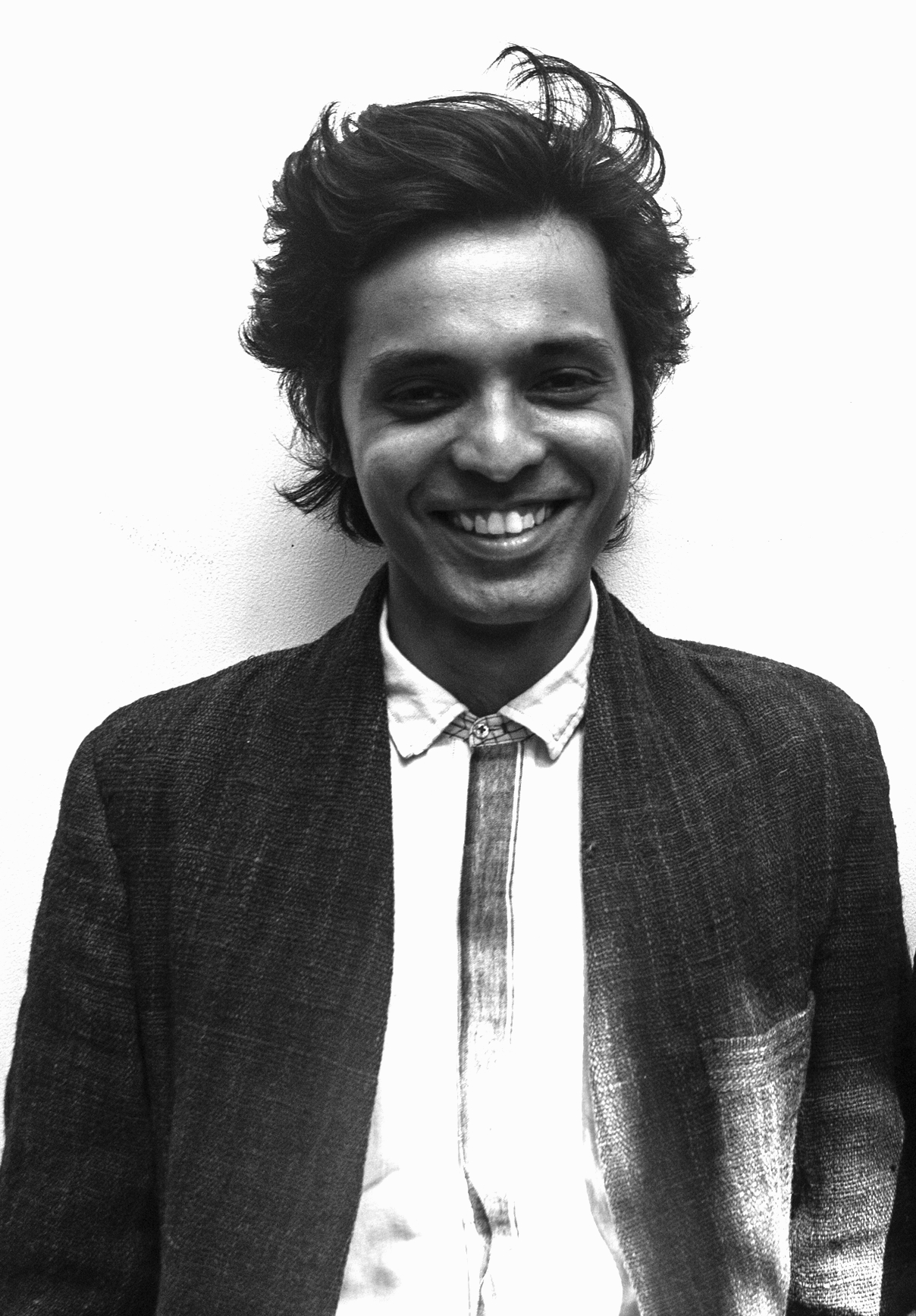Your brand 11.11/eleven eleven has been committed to a dualism of tradition and innovation, to the challenges of sustainable textile production and an aesthetic expression that is rooted in the rules and principles of handcraft production. How does that work in a fashion system that is largely built on speed? Are you able to speak to a global audience through the slowness of handcraft?
The product needs to speak to the customer by itself. Our processes require human intervention, which is the complete opposite of the production houses that use humans only for their hands to run the sophisticated machines, with the rest done by the machine. Today we are becoming conscious of what we adorn, but the change will happen when a larger population makes the shift.
To paraphrase Alan Moore, beauty as a principle refers to an essential quality of artistic work and handcraft. Beauty in this context goes beyond its aesthetic value. It connects us to age-old skills of crafts, to the planet and to each other. How do you feel about a statement like this in the context of your work? Is beauty a natural outcome of ecologically conscious production?
Each piece we make carries a unique beauty that comes from indigenous craft practices, which are a hundred to a thousand years old. Each piece passes through many human hands. This carries along their stories and their energy. It’s important for us to understand the essence each practice conveys and to share it in the purest way possible. For us, design plays an important role in giving the final shape to each product.
Crafts are rooted in the traditional skills of making. They are rooted and local. At the same time, an inherent part of handcraft is that it must evolve with time. In other words, cultural exchange has always been an important part of handcrafts. Your work epitomizes this process. You have introduced new uses and combinations of crafts, for example with your “jugalbandis of crafts” – those combinations of craft techniques like Bandhini and Kalamkari that mark many 11.11 designs. How would you describe your vision of innovation’s role in keeping handcraft relevant and vibrant?
Design plays a very important part in any new development or innovation. For us, design is the backbone of a new relationship with craft. Our interaction with Bandhani (Shibori) began by constructing the garment as a three-dimensional product, rather than simply using Bandhani fabric for garment making. That would have eliminated its unique “crush quality”. In India, Bandhani is traditionally mostly used on scarves and saris. Introducing it to other kinds of garments brought a new dimension to modern clothing and craft – and a new language of celebration to Bandhani. It took a few years of research and development before the processes got streamlined. Also, we wanted to take it to the next level. We combined Bandhani – which is practiced in Kachchh (in India’s western state of Gujarat) – to the hand-painting practice done by Kalamkari artisans from Tirupati (in the southern state of Andhra Pradesh). Bringing these two different regions into a single garment embodied cultural celebration of crafts from different parts of India.
I like to think of this combination as jugalabandi – a duet – of different practices. It’s no coincidence that this is a musical metaphor. It brings new rhythm and new harmony to products. I feel it’s important to bring these stories to life.
"We have been conscious of what we eat, it’s time to be conscious of what we wear."
How would you describe the collaborative processes between you as a designer and the artisans in the creation of your projects? Many of the artisans you work with are economically independent. Does that factor into how they express their own ideas?
The collaboration is between a skilled artisan and a designer. Most craft practices follow certain rules of thumb and design language. For us, it’s important for us to mutually respect our own practices and find a way to bring art to the forefront. Together, we build a new language for the craft. Also, when 11.11 works as a brand with any craft or any artisan, it’s the beginning of a relationship and it calls for sustained commitment from season to season.
Today we are directly associated with more than 450 artisans. They come from different cultures and sectors of India. We are in the process of launching NFC-supported technology, which will connect all the makers behind each product with the customer. [NFC stands for near-field communication, a form of wireless.]
Where do you see the future of handcraft? Is the luxury sector the only place where a sustainable future is possible?
The future of handcraft and indigenous practices will lie in their appreciation. The sooner such practices receive well-deserved recognition, the sooner they will flourish.
For example, hand-woven saris in India have received immense recognition over the past ten years, which has led to growth for the hand-woven sector. Handcrafted products come with a cost, and true cost study will define the position of such products in the retail sector.

